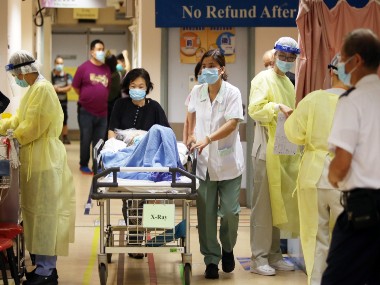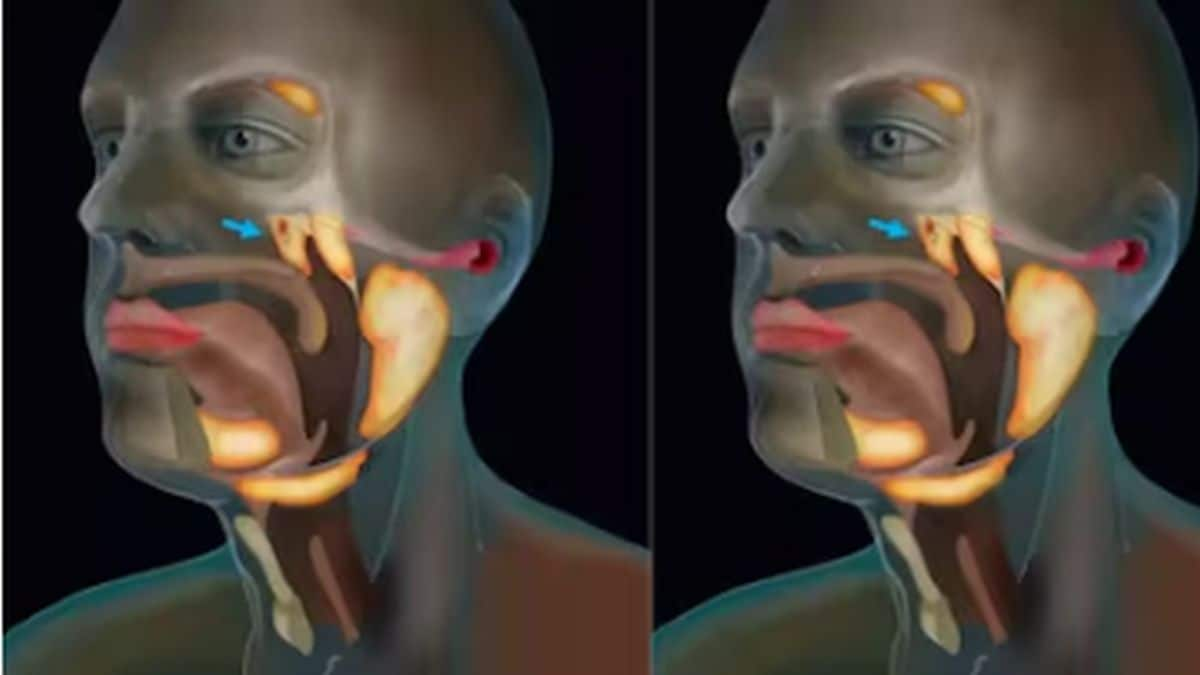A small subset of those who fall severely ill from COVID-19 requires respiratory support to keep them alive. The novel coronavirus can cause pneumonia - inflammation in the lungs that inhibits the ability to transfer oxygen to the blood. Ventilators are used to mechanically stimulate the action of breathing by pushing oxygen into the lungs at pressure using intubation and releasing the pressure to depress the lungs and push out carbon dioxide. However, in some life-threatening situations, ventilator support is not sufficient to keep up blood oxygen levels - the lungs are too damaged. [caption id=“attachment_7921371” align=“alignleft” width=“380”]  Representational image. Image source: Getty Images.[/caption] This is where ECMO (extracorporeal membrane oxygenation) can play a role.
What is ECMO?
ECMO replaces the function of the heart and lungs when the lungs cannot provide enough oxygen or get rid of enough carbon dioxide from the body, and when the heart cannot pump enough blood into the body. ECMO is used for infants with congenital heart defects, those suffering from Acute Respiratory Distress Syndrome (ARDS; which can be caused by severe COVID-19), and following heart surgery when the heart tissue is bruised and cannot sustain the body’s requirements right away. The ECMO machine is connected to the body through plastic tubes (the process is called cannulation). There are two types of ECMO; in VV (venovenous) ECMO a cannula is attached to a vein in the neck and blood is pumped out of the body to an artificial lung which adds oxygen and removes carbon dioxide and pumps it back into the vein. In VA (veno-arterial) ECMO, cannulae are placed in an artery and vein; dark blood (which is oxygen-deficient) is taken out, the oxygen-carbon exchange is carried out by the machine, and the blood is pushed back at a pressure into an artery. Therefore, a VV-ECMO bypasses the function of both the heart and lungs. ECMO is a life-saving machine and is used during life-threatening situations when the body is unable to provide for itself; they do not cure underlying conditions but are meant to buy the body time and give it a chance to heal. Running an ECMO machine is an incredibly technical and labour-intensive process; ECMO specialists are required to monitor the various indicators of the patient and to manipulate the machine to maintain optimal heart and lung support. Patients are also placed on a blood thinner so that blood doesn’t clot and lead to further complications.
The limitations of ECMO
There are complications involved with ECMO - most of those who are on the machine have exhausted other options and it is a last-ditch effort. The blood thinners can lead to bleeding that is hard to control. It is particularly dangerous if there is bleeding in the heart, brain or intestines and surgery is sometimes required to contain the bleeding. Infections are always a concern when external tubes are placed in the body; with ECMO, infections can penetrate vital organs and cause serious issues. Strokes can also occur if adequate blood supply is not maintained in the brain, or due to clots. Similarly, kidney damage can occur if sufficient blood doesn’t reach the organ.
ECMO in the time of COVID-19
ECMO machines are highly sophisticated devices and their availability is exclusive; only major hospitals have them. For instance, only 264 of the 6,000 hospitals in the US have them. Limited studies are available regarding COVID-19 patients but the prognosis is poor. In one study in Wuhan, six patients required ECMO and one survived, while in another, three required it and they all passed away. Data as of mid-April showed that 275 COVID-19 patients were on ECMO support worldwide. The majority remained on ECMO support at the time of data collection, and only 28% survived. These statistics highlight an uncomfortable truth about healthcare during an emergency. ECMO is one of the costliest and most resource-intensive treatments out there, and some patients may need to be on it for weeks. Given the already strained health infrastructure and poor prognosis of patients, some tough decisions will need to be taken about whether ECMO can be deployed widely at all. For more information, read our article on Risks of intubation and ventilators for COVID-19 patients. Health articles in Firstpost are written by myUpchar.com, India’s first and biggest resource for verified medical information. At myUpchar, researchers and journalists work with doctors to bring you information on all things health.


)

)
)
)
)
)
)
)
)



